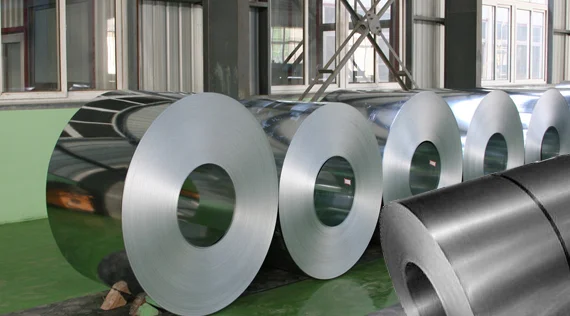INSG releases World Stainless Steel Scrap Trade Data for 2015
Waste & Recycling | 2016-09-20 08:01:19
The International Nickel Study Group (INSG) has published its 28th insight report that analyzes the major trends of stainless steel scrap trade between countries of the world.
SPOKANE (Scrap Monster): The International Nickel Study Group (INSG) has published its 28th insight report that analyzes the major trends of stainless steel scrap trade between countries of the world. The report is segmented into five sections-four sections focusing on specific regions and the fifth section commenting on the global market in general.
The first section of the report covers North and South American regions with special focus on Canada, Brazil, Mexico and the US. According to the report, all the four countries except Canada turned out to become net exporter of stainless steel scrap during the entire year 2015. The Canadian imports dropped by 15% over the previous year to total 188 kt. Meantime, exports dropped sharply by 27% year-on-year to 154 kt. Nearly 60% of Canadian stainless steel scrap exports went to the US. China accounted for nearly 20% of Canadian exports.
The net imports by Brazil totaled around 1 kt. On the other hand, the country’s exports increased by nearly 5% to 44 kt. The main destination of Brazil’s exports was the Netherlands. Mexican exports surged higher by 6.5% to total 124 kt, whereas the imports totaled less than 1 kt. The US accounted for almost 72% of scrap exported by the country. The US imports tumbled by 42% over the previous year to 192 kt. Majority of the imports came in from Mexico and Canada. These countries accounted for 49% and 48% respectively of the imports by the US during 2015. The key destinations of US stainless steel scrap export were China, Taiwan and India.
Among European countries, the key net importers were Belgium, Finland and Spain. Belgium imported 931 kt of scrap, higher by 7% over the year. The exports by the country declined by 9.3% to 65 kt. Finland’s imports dropped by nearly 9% to 607 kt, whereas the exports surged higher by 47% to around 8 kt. Spain imported 335 kt and exported only 25 kt.
The three relevant net exporting countries in the European region were France, the Netherlands and Germany. France’s imports and exports declined to total 134 kt and 342 kt respectively. The stainless steel scrap imports by the Netherlands declined 16% to total 485 kt in 2015. The exports by the country too fell by 11% to 798 kt. Germany imported 291 kt and exported 1083 kt of stainless steel scrap during the year.
Among Asian countries, India, Taiwan, China and Korea were net importers. India’s imports soared higher by nearly 10% to 751 kt during the year. The Chinese imports declined by over 4% to 334 kt. Taiwan imported around 266 kt and exported nearly 41 kt. Korean imports and exported increased during the year to total 289 kt and 154 kt respectively. Meantime, Japan remained net exporter of stainless steel scrap during the year. The scrap exports by the country surged higher by 73% year-on-year to 190 kt. The Japanese scrap imports dropped nearly 28% to 90 kt. Turkish scrap exports tumbled over 20% to 116 kt.
The fourth section analyzes Africa and Oceania region. The major traders in the region were South Africa and Australia, both of them turning out to be net exporters. The South African exports totaled 34 kt, growing by more than 36% year-on-year. Meantime, the country’s imports nosedived by 48% to total 8 kt. The Australian scrap exports totaled 50 kt, whereas the import volumes by the country were negligible.
The INSG report states that Germany, Netherlands and the US continue to remain as the top three stainless steel scrap exporters in 2015. The top three scrap importing nations of the world were Belgium, India and Finland. Also, global trade of stainless steel scrap decreased during the year. The imports were down by 2%, whereas the exports declined by 4.4% in 2015.
 By
By 